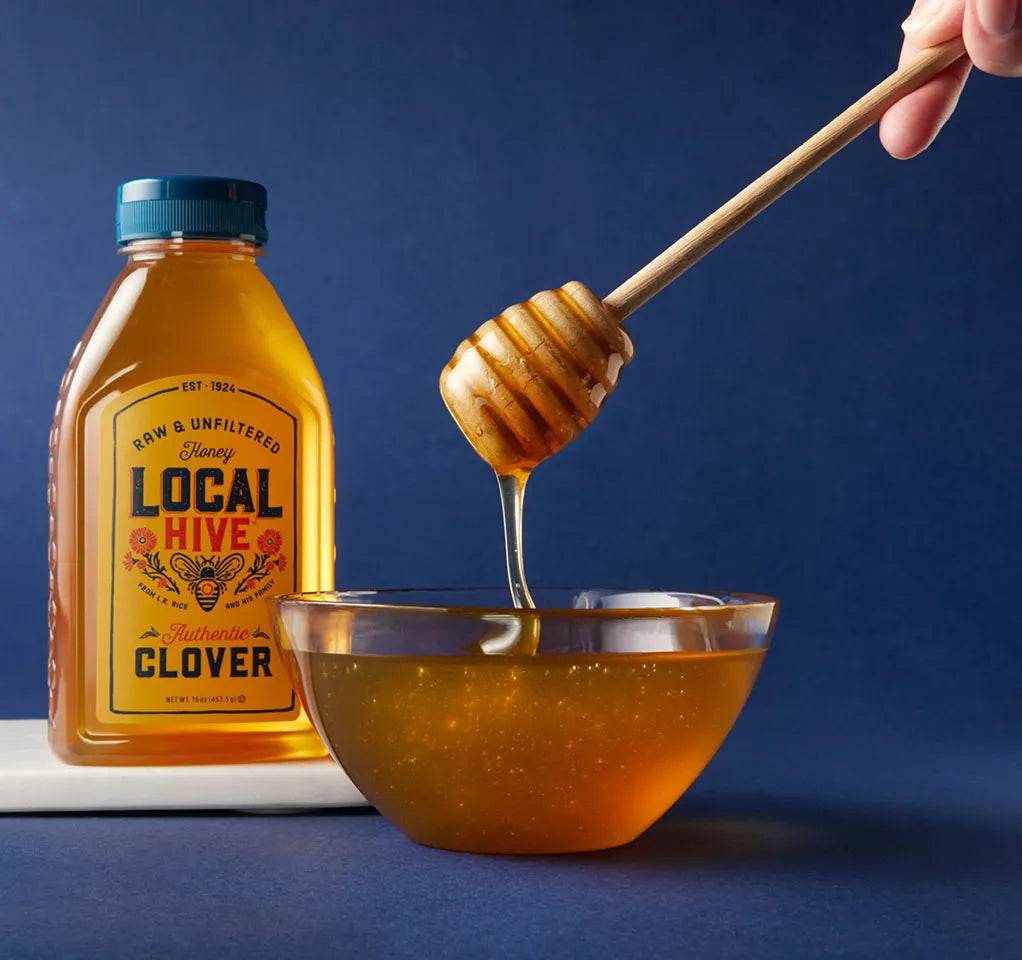What to Know Before You Try Local Honey
Honey Facts
To most, honey is just another sweetener, like sugar or stevia. But there’s more to honey than just sweetness. If you’ve only ever had plain old honey – probably in a bear bottle, not particularly light or dark, no memorable flavors – you’re missing out. Local honeys each have their own unique flavor that’s can add richness to your recipes or morning coffee.
To really appreciate a bottle of local honey, you’ll want to start before you even open it. Labels vary considerably, but look closely and you’ll learn plenty. Here are a few common terms you’ll see:
Clover
Clover is the most common source of pollen in the US, growing in one form or another virtually everywhere east of the Appalachian range. Bees love it. It makes for a mild, neutral sweetness, and complements other pollen sources well. Clover honey can still vary somewhat by region, so make sure to check where your honey is from as well.
Wildflower
This means the bees got nectar from a variety of wildflowers, as opposed to a single source, like the crops on a large farm. This is common catch-all term, and these honeys can vary substantially by region and country of origin. These honeys are likely to have more nuanced flavors than clover honey.
Other Flowers or Fruits
A label may also mention floral sources. This is where things really get interesting. Bees make honey from almost anything that blooms, and every source of nectar and pollen imparts a different flavor. It’s relatively rare to find honey that’s monofloral – containing only one kind of pollen. You’re more likely to see blends of a few floral sources. This is because bees head out and look for whatever’s near their hive. Unless their hive is in the middle of a giant farm – which it may very well be – any honey that bees make is more likely to have a mix.
Country of Origin
Where honey is from tells you more about its taste and quality than anything else. Honey can range from a single-origin bottle from a local beekeeper all the way to a blend from different countries. In some cases, honey may be ultra-filtered to obscure its origin, so having no country of origin is usually a bad sign. Look for language like “Product of ____” or “Made in ____.”
Raw
Bees keep their hives pretty warm, usually well over 90 degrees, but heating honey much more than that can damage the sugars inside and mute its natural flavors. Raw honey means it hasn’t been heated or pasteurized, which is unnecessary as honey is naturally anti-bacterial.
Unfiltered
This means the honey hasn’t been through a strainer to remove anything that’s not honey. A little filtering is okay, but if your honey is completely clear, with no cloudiness or murkiness, it’s probably been ultra-filtered, which removes much of the flavor. (If you want the full story on filtering, check out this article from Vaughn Bryant, the preeminent pollen analysis expert.)
Local honeys are all worth exploring. Like wine, they have terroir: a unique character that comes from the soil, plants and environment. They’re true honeys that reflect the place and respect the beekeepers they come from. Next time you’re shopping for honey, take a closer look at the bottle. You might just learn something.

